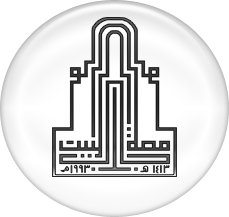| DC Field | Value | Language |
|---|
| dc.contributor.author | عمر الحضرمي | - |
| dc.date.accessioned | 2015-04-16T11:36:00Z | - |
| dc.date.available | 2015-04-16T11:36:00Z | - |
| dc.date.issued | 2013-05-01 | - |
| dc.identifier.uri | http://hdl.handle.net/123456789/292 | - |
| dc.description.abstract | ملخص
لقد تناولت هذه الدراسة مسألة "الدولة الصغيرة" كونها أصبحت مكوّناً هاماً في السياسة الدولية، خاصّة في فترة ما بعد انتهاء الحرب العالميّة الثانية، حيث ولد الكثير من هذه الدول تحت رعاية القانون الدولي ومؤسساته ومنظماته، وعلى رأسها هيئة الأمم المتحدة، وبعد تنامي حركات التحرر القوميّة العديدة، التي أنشأت دولاً عدة لم يكن الكثير منها دولاً كبيرة.
وقد انطلقت هذه الدراسة من فرضية تقول بأن التطورات والظروف الدوليّة قد غيّرت الكثير من المعايير في حسابات تصنيف الدول، ولفحص هذه الفرضية طرحت الدراسة مجموعة من الأسئلة وأجابت عليها كان من أهمها؛ هل حقيقة وقع تحوّل في مفهوم الدولة الحديثة؟ وهل ما زالت الدولة الكبيرة قادرة على التحكم في السياسات الدولية؟ وما هي الخطوات التي انتهجتها الدول الصغيرة في سبيل إثبات وجودها والمحافظة على بقائها؟
وحتى يمكن تحقيق ذلك أخذت الدراسة بمناهج مفهوم القوة ومفهوم العلاقات الدولية ومنهج الدور والمنهج المقارن، وذلك من خلال استخدام الأسلوب التحليلي ومنهج الاستقراء، ومن خلال مراجعة العديد من الأدبيات ارتكازاً على دراسة الحالة التفسيرية كأحد وجوه المنهجيّة المقاربة وذلك بإعادة تفسير الأوضاع القائمة.
ولقد توصلت الدراسة إلى أن المجتمع الدولي قد بدأ يشهد تغيّراً في موازين القوى، من حيث حسابات القدرة والدور. فالدول التي كانت تصنّف صغيرة، حسب معايير القياس القديمة من حيث الحجم وعدد السكان والقدرة العسكرية والإمكانات الاقتصادية، أصبحت تصنف أحياناً بأنها دول قوية من حيث الفاعلية والدور والقدرة على التأثير.
Abstract
This study deals with the issue of a "small-size states" having become an important part of international politics, especially in the wakes of World War II. Many small-size states came out under the auspices of international law, its institutions and organizations, headed by the United Nations, and after the completion of numerous national liberation movements, which created multiple states, although many of which were not large size states or countries.
The study sets out from the premise that developments and international circumstances have changed many standards in the ranking designation of countries. To examine this hypothesis, the study poses a series of questions and answers them: the most important concerns are: Does a change really occur in the concept of the modern state? Are large-size countries still able to control international politics? What are the steps pursued by small-size states in order to prove their existence and maintain their survival? In order to achieve this, the study examines the concepts of power and international relations and the methodology of roles. It uses the analytical method and induction the methodology as it settles these issues down.
The study concludes that the international community has begun to witness a change in the balance of power, in terms of capabilities and role. Countries that are classified as small in size—although are relatively small in terms of size, population and military capacity and economic potential— can be classified as large states in terms of effectiveness, political roles and the ability to appear on the international map. | en_US |
| dc.subject | مفهوم القوّة | en_US |
| dc.subject | دور الدولة | en_US |
| dc.subject | الدولة الصغيرة | en_US |
| dc.subject | الدولة الكبيرة | en_US |
| dc.subject | small-size state | en_US |
| dc.subject | the role of state | en_US |
| dc.subject | large-size state | en_US |
| dc.subject | concept of power | en_US |
| dc.title | الدولة الصغيرة : القدرة والدور ، مقاربة نظرية | en_US |
| dc.type | Other | en_US |
| Appears in Collections: | مجلد 19 العدد 4
|

